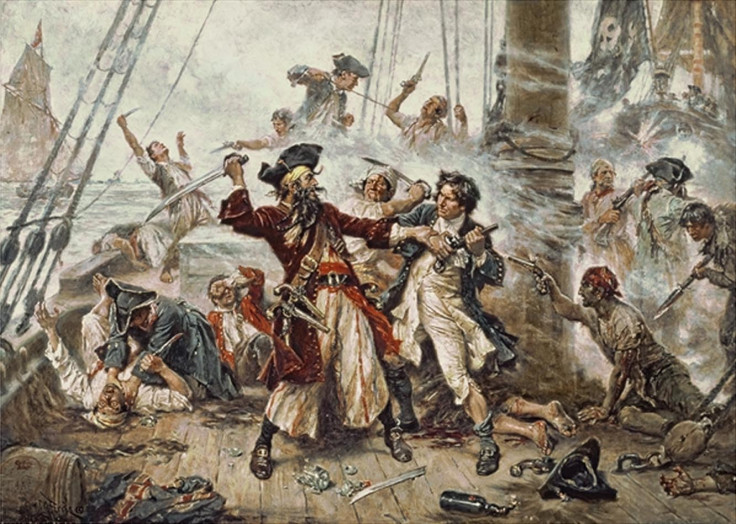300 years ago Blackbeard infamously attacked the ship now known as 'Queen Anne's Revenge'

KEY POINTS
- Blackbeard had a short but active career in piracy, from 1716 to 1718
- He only sailed abord the Queen Anne's for a year before wrecking the ship in North Carolina.
The Queen Anne's revenge is to Blackbeard what the Black Pearl is to Jack Sparrow (Captain Jack Sparrow).
The infamous pirate captain stole the ship from French merchants on this day, 28 November 1717, exactly 300 years ago.
Blackbeard, whose real name was Edward Teach - or Thatch, depending on sources - became a pirate under the wing of Captain Benjamin Hornigold, who taught him the tricks of the trade.
On 28 November, the pair captured a large French ship, La Concorde in the Caribbean. Teach kept it for himself and renamed it Queen Anne's Revenge.
The Queen Anne's was a slave ship that Teach modified for piracy purposes. Legend has it he installed 40 cannons on it to terrorise his enemies.
In September 1717, King George I set out to eradicate piracy. He issued a proclamation "For Suppressing Pirates in the West Indies." All pirates who surrendered themselves would be pardoned, and guaranteed a clean slate.
But the message failed to reach the Caribbean, and another proclamation had to be issued in 1718. It is believed Hornigold took the deal. He eventually became a pirate hunter before dying in a shipwreck in 1719.
Teach was now on his own. And his legend could take off. He made the Queen Anne's the flagship on his fleet. His large, impressive beard, tied with black ribbons, would earn him his famous moniker.
Ever the theatrical devil, he would light slow fuses by his ears when going into battle. The fuse would produce smoke to scare his assailants.
Aboard his ship, he merely proceeded to terrorise the Caribbean and Atlantic. However, as terrifying as he may have been, Blackbeard wasn't one of the most prolific pirates of Piracy's golden age. Black Bart Roberts, one of Blackbeard's contemporaries, had more ships and more men than him.
But Blackbeard's demeanor earned him international notoriety. Although the Queen Anne's is nowadays one of the most famous pirate ships, it didn't sail for that long. A year after it was captured by the captain, it sank in 1718.
Blackbeard sailed on without her, before accepting a pardon plea and starting to loot for the crooked governor of the North Carolina.
He died in battle in late 1718. Legend has it that when his body was captured, he had "five and twenty wounds." The last wound was fatal: he was decapitated.
As sad as it sounds, the captain didn't leave any treasure behind, and it is unlikely he buried anything either.
Although it sank before its captain died, the Queen Anne's is as close as we will get to finding a Blackbeard treasure. Researchers from North Carolina confirmed they found its wreckage in 2011, along with muskets, cannons and anchors.






















